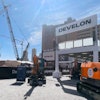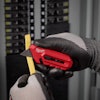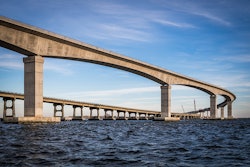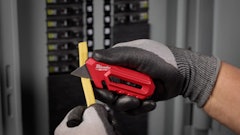With its origins dating back to the 1930s, the evolution of Swank Associated Companies, Inc., New Kensington, Pa., is closely tied to that of the United States highway infrastructure. Founded by Russell C. Swank, Sr., with the mission of building concrete streets, the company transitioned into bridge construction in the 1950s. As the market for highway construction weakened, the company moved into roadway and bridge repair and maintenance work in the 1970s.
Today, Swank Associated Companies offers a number of rehabilitation services, including milling, concrete joint rehab, saw and seal of asphalt overlays and maintenance sealing of highways and airport runways. However, one of the staples for Swank's Construction segment is bridge rehabilitation, where it is a recognized leader. "In 2007, we completed 30 bridge deck placements in Pittsburgh alone and another 28 placements in the Bedford (Pa.) area," says Randy Solar, construction superintendent for Swank Associated Companies.
With so many bridge overlays in its portfolio, Swank Construction has the process down to a science. The contractor works with affiliated companies that perform the hydrodemolition of the bridge deck and make the latex modified concrete (LMC) for the overlay.
Anchoring the overlay process for Swank Construction are Bid-Well automatic roller pavers from Terex Roadbuilding. "We've been using Bid-Well pavers for at least 50 years," comments Solar. The company owns multiple 3600 bridge and 5000 roadway pavers and older 3200 and 2500 bridge pavers. "The 2500 is about 50 years old, and we are still using it today. It' one of my favorite machines," he adds.
Weekend warriors
For years, the trend in road and bridge rehabilitation has been to complete the repairs during "non-peak" hours. More and more work is taking place at night and over the weekends to reduce construction related congestion on busy roadways and bridges. Strict lane closure time periods are written into contracts with severe disincentives for work that goes beyond the allotted time.
A recent Swank Construction bridge overlay project on the Interstate 376 Parkway Bridge in Pittsburgh was a prime example of working under a tight deadline. The bridge was closed to traffic at 8 p.m. Friday night for a LMC overlay and had to be reopened by 5 a.m. on Monday morning. Not adhering to this timeline meant a $30,000 per-hour disincentive.
Swank Construction's entire overlay process -- milling, demolition, washing and paving -- for the 1,100 ft (335 m) long bridge decks had to be completed in less than three days. "We did about three weeks worth of work in a weekend," says Solar. There was no room for error.
Swank Construction's process began with milling the existing overlay plus a small portion of the bridge deck. Following closely behind, a hydrodemolition unit then combed the deck with high water pressure between 12,000 to 15,000 PSI. "The hydro unit only removes the bad concrete and leaves the good," mentions Solar.
Next, the loose concrete and water was vacuumed away as crews prepped for the final deck wash. After an 8,000 psi power washing, the uneven deck surface was ready for the overlay. "The latex modified concrete bonds to everything, but it does not like heat or wind, so we try to keep it moist and cool," explains Solar.
Swank Construction selects from three different LMC designs for overlay projects. The first is a Type 1 Mix that has a four-day cure period, while a second, Type III Mix, has a two-day cure time; none of which would work on the I-376 project.
With time being of the essence, the contractor selected a Rapid Set Mix, which cures to 3,000 PSI in three hours. After deck grooving, removing paving equipment and final vacuuming of the bridge deck, the overlay can quickly be opened to traffic, which was the perfect fit for this weekend bridge project.
Consisting of a 0.25 in (6.35 mm) fractured aggregate, the Rapid Set Mix was placed in front of the Bid-Well 3600 paver. With the concrete's quick cure time, the paving process has to remain continuous, so it can be completed prior to setting.
Fully adjustable, dual 42-in (1066.8-mm) long augers efficiently metered the LMC in front of the paver's patented Rota-Vibe system. The two 11.5-in (292-mm) long rollers delivered up to 5,000 VPM (83.3 Hz) to reconsolidate the top layer of concrete. This helped to deliver a denser, more uniformly consolidated concrete surface.
"One of the things I like about the 3600 is its flexibility. I can add options in the field to retrofit the paver to meet the needs at the jobsite," comments Solar. Swank Construction's crew used the optional Bid-Well fogging system on the overlay project. The system's unique nozzles atomize water to create a true light fog at a flow rate of 1 to 4 gallons per hour (3.8 to 15.1 lph), which was perfect for a LMC that needs moisture to cure properly.
Even with the tight time frame, Swank Construction was able to finish the project on schedule. "It was a continual process," recalls Solar. "We had close to 100 people working on the bridge over the weekend to mill, hydrodemolish, vacuum, power wash and pave."
The biggest benefit of all, however, is the fact that a LMC overlay is not just a quick fix. The surface wears like iron and should last from 25 to 35 years.




















